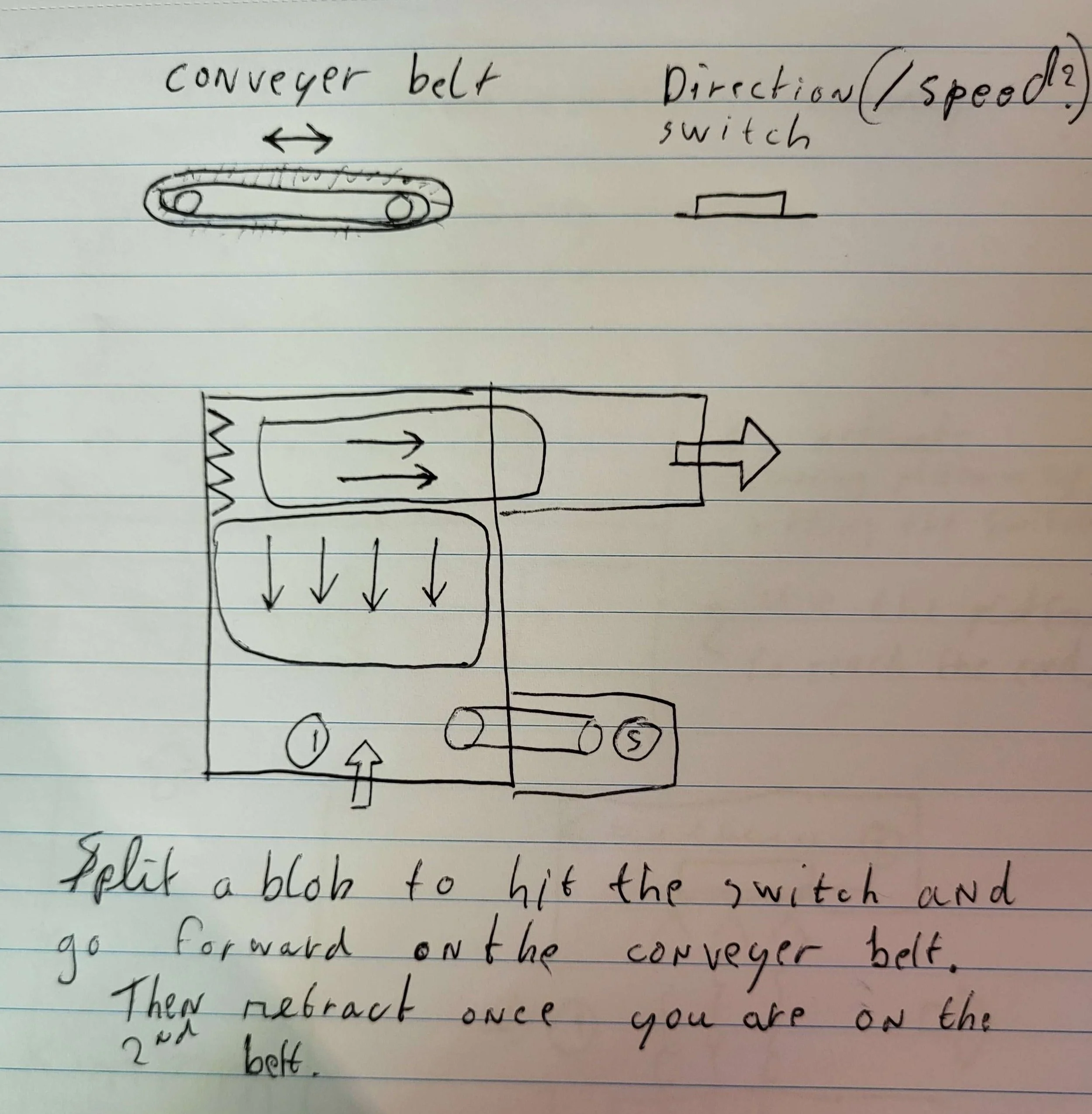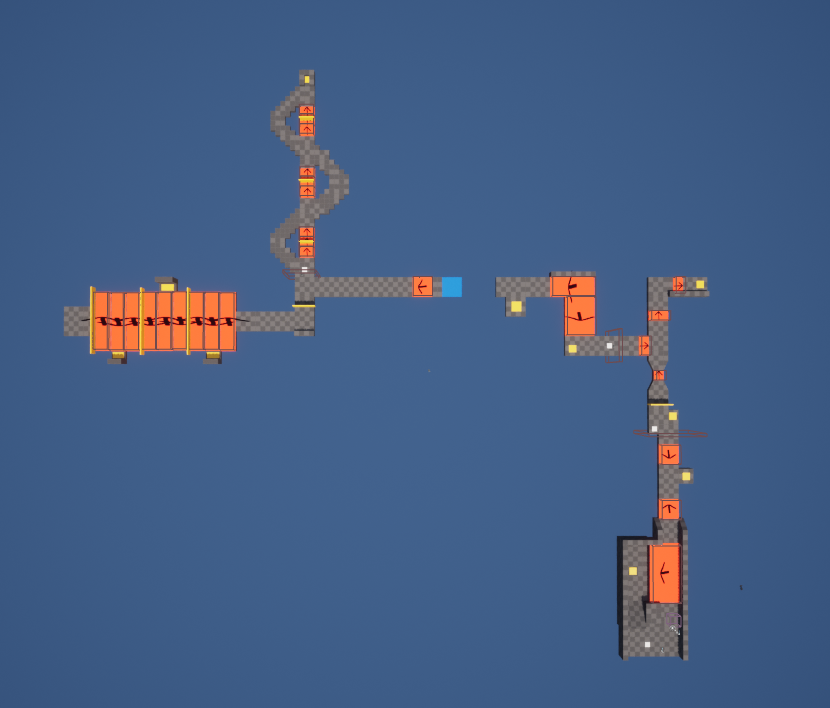Summary
Game Description
Enter a space adventure on the cosmic highway to help Glub recover the parts of his broken ship! Solve puzzles and manoeuvre through the intricate and breathtaking highway stations to rebuild your rocket. Take in the beauty of the celestial landscapes as you uncover the hidden treasures this galactic quest has to offer!
The Deliverable
For this school project, each group had to choose a reference game and a theme out of a list of options which were pre-determined by the lecturers. Our reference game was Mercury Meltdown and our theme was circulatory system.
The goal was to create a game demo inspired by the chosen reference game from concept to release within 8 weeks.
Project Information
Engine:
Unreal Engine 5Platform:
Windows (PC)Genre:
Puzzle-PlatformerRelease Date:
June 2023
Context:
University ProjectProject Duration:
8 WeeksTeam Size:
15 peopleDeliverable:
Game Demo
Responsibilities
Project Role
This project I worked as a Level Designer, focused on concepting and building levels in the engine.
I also helped as a general Game Designer, concepting the overall game, playtesting and iterating.
Contributions
Concepting Level Ingredients
Whiteboxing Levels
Onboarding level
Conveyor belt level
Fan level
Setdressing Levels
Helped the visual artists in adding props and decor to the level.
Level Mechanics Concepting
Conveyor mechanic
Fan mechanic
Switches Moving platforms
Others
Playtesting and iterating
Conducted 5 playtesting sessions
Process
The Concept
This project was the first time in the study course that we as design students were able to work together with the artists and programmers. This was also the first time working in a larger team for most of us, causing our concepting phase to be quite hard.
Our reference game was Mercury Meltdown, a puzzle platformer, in which you tilt the stage to move a blob around. We wanted to take this concept and take a more unique approach by instead of playing on a plane, you play inside of a cuboid. However, it quickly became clear that this wasn’t feasible as it would be technically difficult.
That’s when we switched over to taking the more conventional plane level design, and we moved our Unique Selling Point towards the slime character that loses mass as they move around and is able to split part of their mass onto the level.
This resulted in a more feasible concept, which was easier to accomplish. I then focused on concepting level mechanics and creating level ingredients that utilized those mechanics. The initial levels that we made out of those ingredients ended up being quite large however, which wasn’t as enjoyable as Mercury Meltdown’s bitesize levels. So, I ended up cutting off a lot of ingredients and ended up with smaller, more enjoyable levels.
Concepting, whiteboxing and setdressing the Levels
I started concepting with the level mechanics, like moving platforms, conveyor belts, gates and buttons. I also had quite a few mechanics that I thought of that ended up not making the cut, like an electricity mechanic and a cable car mechanic.
With the mechanics that did make the cut, I started concepting and whiteboxing level ingredients in Unreal Engine. Once I had a few ingredients in the engine, I would start playtesting them and iterating. I repeated this cycle until the team was satisfied with the levels.
Then once the levels were finished and tested I’d move on to setdressing the levels with the props, models and textures made by the visual artists. Then test again for visual bugs or inconsistencies.
Takeaways
Make decisions!
One of the key takeaways I took from this project was that making decisions fast is always better than making no decision or wasting time trying to get a consensus out of the team. In the beginning, our team struggled with making decisions, but once we did make decisions everything started to go a lot smoother.
Playtest As soon as possible
Another thing I learned was that the sooner you playtest, the better. Playtesting early helps identify problems and ensures that you don’t waste your time working on something that ends up being removed because it doesn’t work when you let people play it. This happened to me once this project, and I made sure it wouldn’t happen again.







